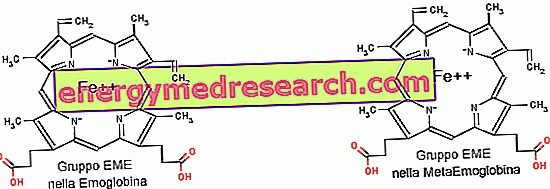Definition
Known to most as cellulite, edematous-fibro-sclerotic panniculopathy is an aesthetic disorder common to many women, so widespread that it is almost considered a physiological phenomenon. Cellulite consists of the alteration of the adipose panniculus, which is characterized by edema, water retention and hypertrophy of fat cells; in the most advanced stage (sclerotic phase), cellulite degenerates into a real pathology, in which hard, painful and large nodules of adipose tissue are formed.
Causes
Cellulite can be caused by several elements: of all, the female estrogen hormonal component heavily affects the manifestation of the disorder. However, the triggering elements can be multiple: clothing that is too tight, poor nutrition, rich in fat and simple carbohydrates, intake of oral contraceptives, vitamin B6 deficiency, diabetes mellitus, excessive weight loss, excessive exposure to sources of heat, pregnancy, obesity, sedentariness, stress.
Symptoms
Only the sclerotic stage of cellulite causes symptoms such as pain and discomfort in the affected area; except for this form, cellulite does not create any disturbance, if not clearly the aesthetic one: the skin affected by cellulite takes on the appearance of the typical orange peel, a consequence of the accumulation of liquids in the adipose tissue. The appearance of the skin with cellulite is generally spongy and swollen; it is possible that cellulite favors the formation of stretch marks.
Diet and Nutrition
Natural Care
Information on Cellulite - Drugs for Cellulite Care is not intended to replace the direct relationship between health professional and patient. Always consult your doctor and / or specialist before taking Cellulite - Cellulite Care Drugs.
drugs
Before resorting to drugs to treat cellulite, it is good to distinguish the pathological form from the aesthetic disorder: pathological cellulite, being a health problem in all respects, must be treated with mesotherapy, liposuction and electrolipolysis. When cellulite is "only" an aesthetic problem, the treatment is less invasive, even if it is not always easy to solve.
Therefore, more than drugs, we should talk about measures to prevent or lighten the disorder:
- Follow a correct and balanced diet, without excesses and poor in salt and simple sugars
- Avoid too fast weight loss
- Avoid too much acidic foods
- Drink a lot of water
- Dilute daily calories in 5 meals (breakfast, lunch, dinner and two snacks)
- Massage the affected area with specific creams and oils, useful for stimulating the microcirculation
- Practicing sport: a sedentary lifestyle is one of the major predisposing factors for cellulite
The treatment of cellulite, as can be seen from what has been written, is purely behavioral: the administration of anti-cellulite drugs is strongly discouraged.
In this case, phytotherapy plays a leading role: many drugs can act on the microcirculation, stimulating circulation and favoring the "melting" of cellulite.
- Centella asiatica ( Centella asiatica ): Centella asiatica is a plant widely used in anti-cellulite creams, thanks to its reactivating micro-circulation properties (not surprisingly, centella asiatica extract is widely used for the treatment of hemorrhoids, wounds from decubitus and varicose veins). Centella asiatica extract is available both as a cream and as an operculum to be taken orally.
- Birch ( Betulla alba ): also the birch, with the phytocomplex consisting of triterpene saponins, tannins, flavonic glycosides and resins, is widely used as a natural remedy against cellulite. In particular, birch seems particularly useful when formulated in the form of herbal tea: favoring diuresis (and urine, elimination of organic compounds), the flavonic saponins and glucosides of the drug can exert a discrete beneficial effect to treat cellulite .
- Horsetail ( Equisetum arvense ): the extracts of this plant are often exploited for the formulation of anti-cellulite creams, especially together with other extracts. The phytocomplex is rich in mineral salts, saponins, flavonoids and alkaloids. In addition to the creams, the plant is used in herbal medicine in the form of diuretic, remineralizing and deflating herbal tea, therefore indicated to lighten the heaviness of the legs, which is associated with cellulite.
- Red vine ( Vitis vinifera ): the red vine is one of the possible natural "drugs" for the treatment of cellulite. Rich in antioxidant substances, the red vine phytocomplex is characterized by the presence of flavonoids and anthocyanins, which act in synergy preventing the increase of capillary permeability: in this way, the stabilization of elastin and collagen fibers is favored, and is strengthened the matrix of the vascular connective tissue.
- Pineapple ( Pineapple Sativus ): bromelain is a proteolytic enzyme obtained from pineapple extract: this enzyme appears to be useful in the treatment of cellulite, thanks to its soothing, anti-reddening and, above all, anti-edema properties. Furthermore, pineapple extract is useful because it improves capillary permeability and promotes the drainage of edematous tissues.
- Horse Chestnut ( Aesculus hippocastanum ): the drug marker is escin, saponin with remarkable microcirculation stimulating properties: a cream formulated with this active ingredient is indicated to increase capillary resistance and decrease permeability.
- Phosphatidylcholine: the use of this substance to treat cellulite is one of the innovative products: the therapeutic action of phosphatidylcholine results in the ability to dissolve fats, consequently the volume of adipocytes is reduced. Treatment with this active ingredient is performed in an outpatient manner by expert personnel and the technique is minimally invasive. There are also other products, locally applied (gels, creams), formulated with phosphatidylcholine and other specific anti-cellulite active ingredients.
It is recommended to apply creams or anti-cellulite products on clean and free skin; it is also recommended to avoid a sedentary lifestyle, to practice a constant physical exercise and to follow a healthy and balanced diet.
Insight:
Aesthetic cellulite should not be confused with infectious cellulite, caused by an inflammation of the connective tissue: in this pathological form, the bacteria penetrate the skin starting from superficial microlesions, infecting the entrance site. The most involved pathogens are streptococci and Staphylococcus aureus .
The therapy, lasting about two weeks, is purely antibiotic and involves the oral administration of some drugs, such as:
- Flucloxacillin (eg. Flucloxacillin GNT): the drug is an inhibitor of beta lactamase also used to treat infectious cellulite (especially in the non-sterptococcal form).
- Phenoxymethylpenicillin (eg Fenoss FN): the drug belongs to the class of penicillins. Some individuals who do not tolerate this active ingredient must stop taking it and, after consulting a doctor, resume treatment with an alternative drug.
- Benzilpenicillin (eg Benzil B, Penicillin G): another penicillin indicated in oral therapy for the treatment of infectious cellulite. The dosage must be established by the doctor.
Infrequently, infectious cellulite is treated with intravenous antibiotic drugs.



